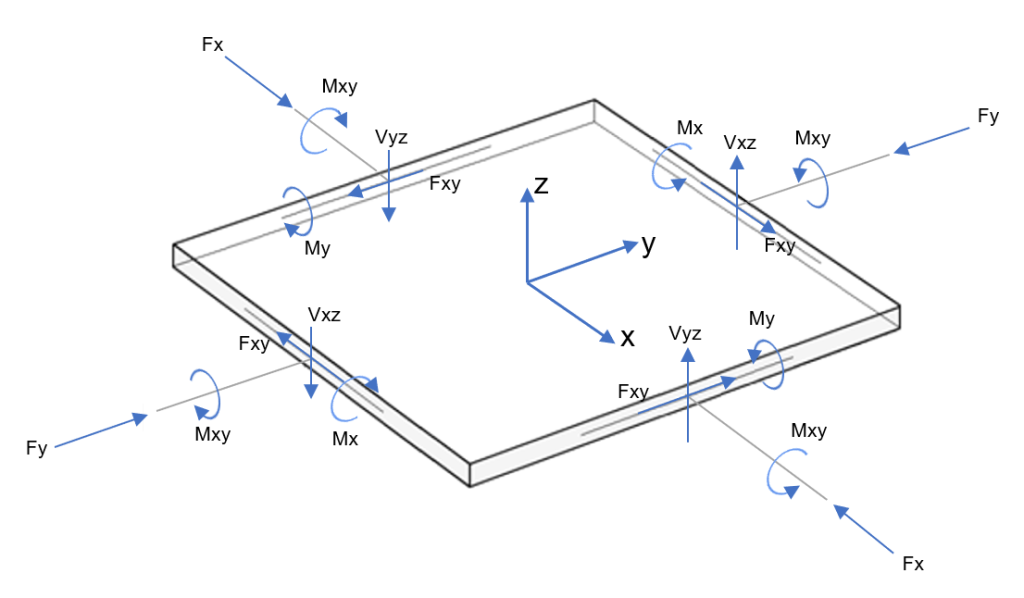Convenzioni sul segno del momento
Carichi applicati, spostamenti, e le reazioni sono positive quando agiscono lungo o attorno alla direzione positiva dell'asse. Per rotazioni (come momenti) la direzione positiva è rispetto alla REGOLA DELLA MANO DESTRA:
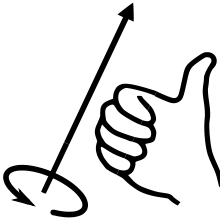
Diffidare degli assi utilizzati per definire i carichi. Per impostazione predefinita, i carichi sono lungo il assi globali tuttavia si possono definire carichi distribuiti rispetto al asse dell'asta locale. Allo stesso modo, è possibile definire le pressioni della piastra globalmente o localmente al piatto. Anche, ricorda che gli assi locali di aste e piastre possono essere visualizzati e attivati dal file Impostazioni di visibilità.
Azioni dei membri
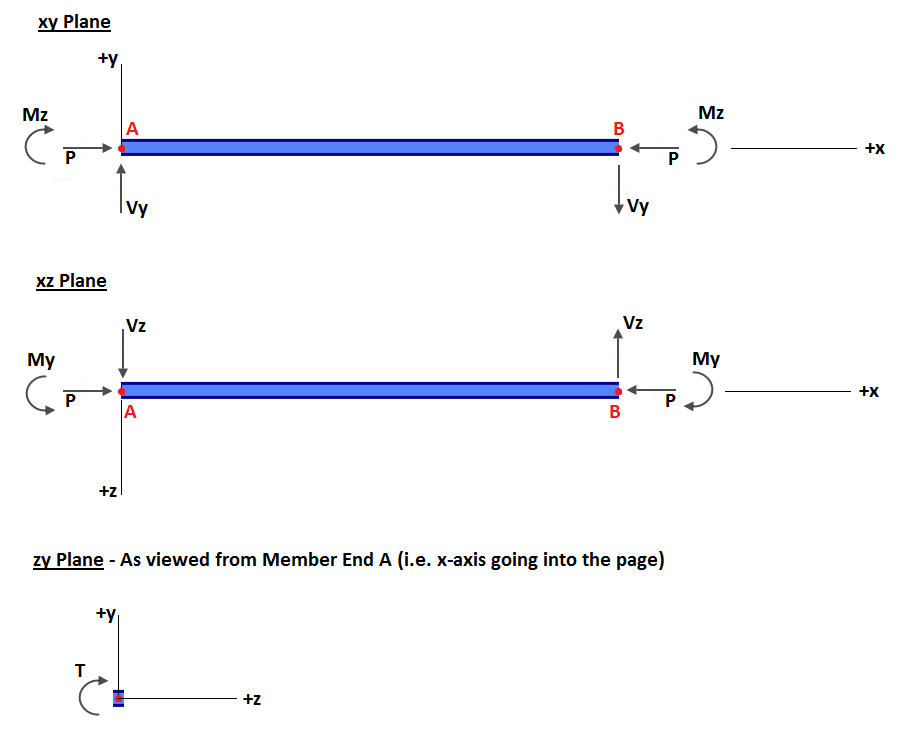
Nello schema sopra:
- P = Forza assiale
- T = Forza torsionale (vale a dire. momento attorno all'asse x del membro)
- Vy = forza di taglio nell'asse y dell'elemento
- Vz = Forza di taglio nell'asse z dell'elemento
- My = Momento flettente nell'asse y dell'asta
- Mz = Momento flettente nell'asse z dell'asta
Lo schema di cui sopra può essere riassunto come segue:
- Forza assiale positiva (P): Compressione
- Momento positivo (M): Compressione sul lato dell'asse positivo dell'asta
- Taglio positivo (V ): Il nodo A dell'asta trasla nell'asse positivo rispetto al nodo B.
- Torsione positiva (T): Il nodo B ruota in senso orario se visto dall'estremità del nodo A. Oppure il nodo A dell'asta ruota in senso antiorario se visto dall'estremità del nodo B. Entrambi i casi sono conformi alla regola della mano destra.
NOTA: C'è un'ambientazione dentro impostazioni chiamato “Segno BMD inverso” che inverte la convenzione del segno dei diagrammi del momento flettente per adattarsi a qualsiasi convenzione con cui hai più familiarità. Puoi trovarlo andando sulla barra degli strumenti in alto e poi impostazioni > Visualizza > Segno BMD inverso.
Esempio semplice
Per impostazione predefinita, un semplice carico distribuito verso il basso con carichi su due punti visualizzerà il seguente diagramma del momento flettente:
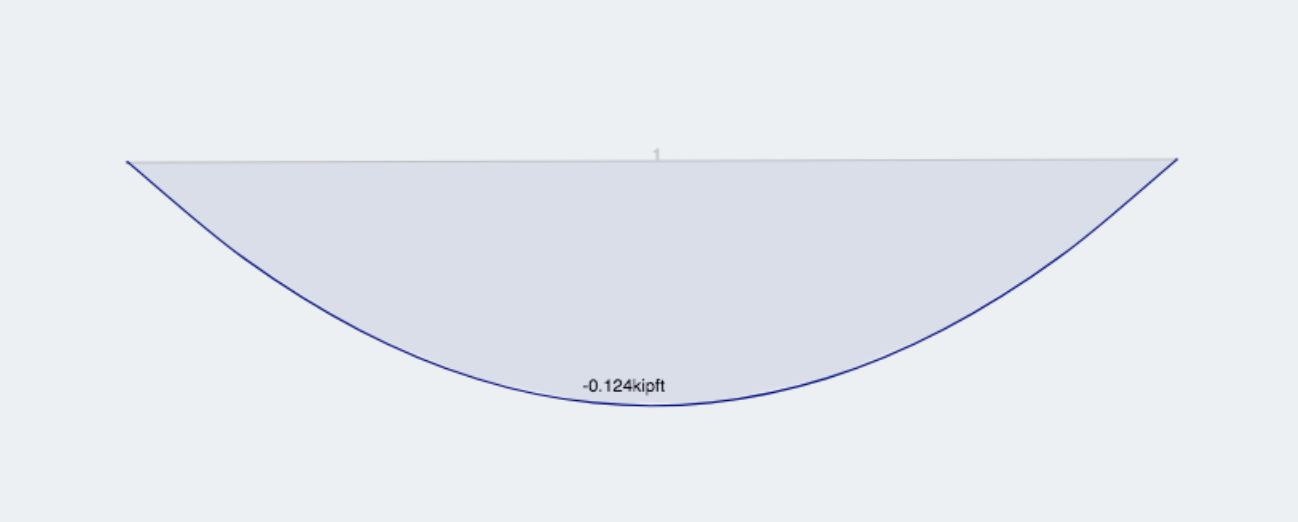
Se il "segno BMD inverso’ l'impostazione è attivata, lo stesso identico modello produrrebbe il seguente diagramma del momento flettente:
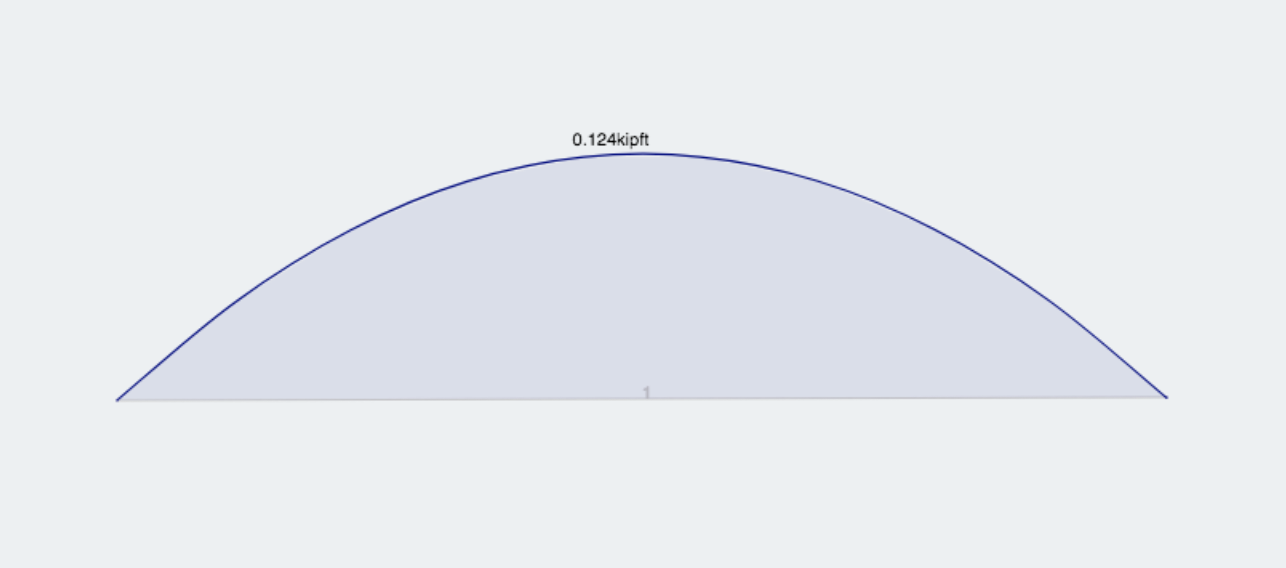
Azioni del piatto
SkyCiv utilizza una piastra ad elementi finiti per l'analisi della flessione in due direzioni principali. Le azioni della piastra sono mostrate nelle immagini seguenti.
